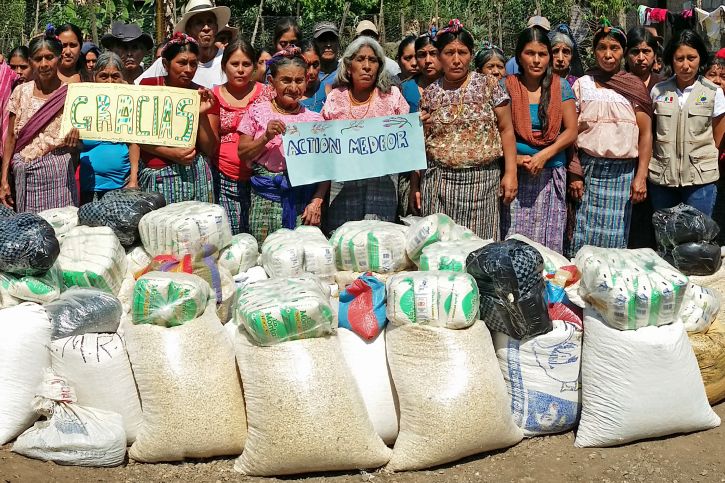You are here:
Drought in Guatemala 2014

Droughts, flooding and a coffee rust crisis in Central America led to crop failures, malnutrition and poverty in 2014.
Today, the countries are still grappling with the aftermath. Worst hit are the people of Guatemala. Around one third of the population here depend on agriculture — a large percentage are small farmers growing food for their own needs, who live below the poverty line. In recent years, global warming, and particularly the El Niño phenomenon — the warm ocean currents along the Pacific coast of South America that arise every few year — but also prolonged rain and tropical storms have increasingly been responsible for flooding and long periods of drought that caused a drastic drop in desperately needed crops. Additionally, most families are indirectly affected by the coffee rust crisis, as many have family members working as day labourers on the coffee plantations to better their income.
During the drought and the coffee rust in 2014 the Guatemalan government declared a state of emergency. The lack of rain across the country resulted in crop failures of 70 - 85%. Some 236,000 families — around 1.1 million people — were directly affected. The national authorities reported 12,200 cases of acute malnutrition, 216 children died of the consequences, and a further 500,000 children under the age of 5 are now at imminent risk of starvation.
The repercussions of the disaster in 2014 are still very much felt. Many families lost their livelihoods. Not only the crops of 2014 were destroyed, so was the seed for the following year, or it was used as emergency food. The health and nutritional status of the people has reached alarming levels. Especially the rural population has no access to medical care.
Central America is one of the most vulnerable regions to natural disasters in the world. Climate researchers have warned of further drought conditions in coming years. action medeor is active especially in the departments of Huahuatenango, Jacaltenango and Chiquimula, as their location in the “arid belt” leaves them among the areas worst affected by the drought in 2014. Cooperating with the local partner organizations Menachor and UCIIS, action medeor organized the distribution of staple foods and seed in the first half of 2015, and guaranteed medical care.